Ford Australia might be a bit late to the large turbo-diesel SUV market segment, but it doesn’t stop the 2012 Ford Territory Titanium TDCi from being a very worthy contender. Especially if you compare its entry-level price to the rivals and take into account that, unlike the others, it has been developed specifically for Australian conditions.
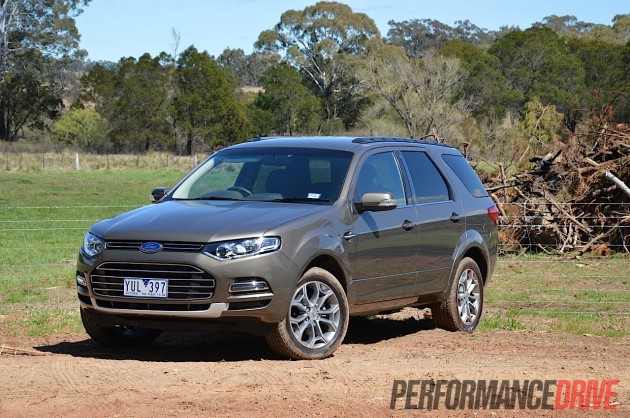
2012 FORD TERRITORY TITANIUM TDCI RWD – PROS AND CONS
PROS:
- Fuel efficient, especially for a 2109kg SUV; 850km-plus to a tank in everyday conditions
- Loads of space inside; seven seats
- Quiet and reasonably refined turbo-diesel engine
- Decent list of standard features on top-spec Titanium
CONS:
- Suspension is too soft, doesn’t feel like it can manage the vehicle’s weight; floats and bounces
- Some interior creaks and rattles; build quality not up to scratch for a $58k vehicle
- Third-row seats only really suitable for children
- Pretty ordinary stereo system, especially for the ‘top-line’ Titanium
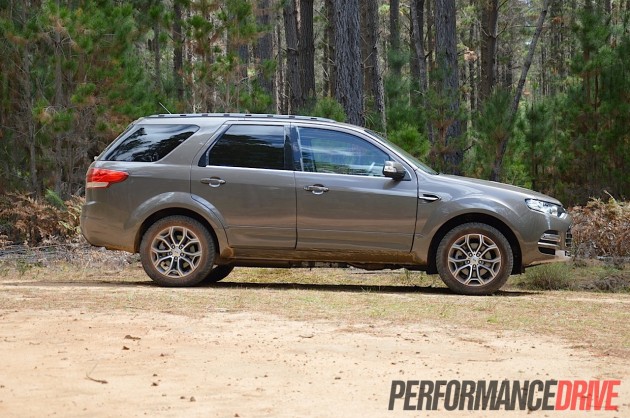
2012 FORD TERRITORY TITANIUM TDCI RWD – OVERVIEW
If you haven’t already seen one on the roads, allow us to introduce you. This is the Ford Territory. It’s one of Ford Australia’s most popular vehicles at the moment, and with the Falcon wagon’s demise in June 2010, it’s also the only large wagon Ford currently offers in Australia.
To give you an idea of how popular it is, in August 2012 Ford sold 1357 Territorys, and 1353 Falcons. This made it the most popular passenger Ford outright, ahead of the Fiesta (753), the Focus (1232), and the Mondeo (497), only to be outsold by the Ford Ranger light commercial ute (1629: 4×2 and 4×2 combined).
In early 2011, Ford introduced a facelift for the Territory range giving it a complete makeover on the outside, and a new turbo-diesel engine option underneath – joining the usual 4.0-litre inline six petrol. The diesel is now the only engine available for all-wheel drive Territorys.
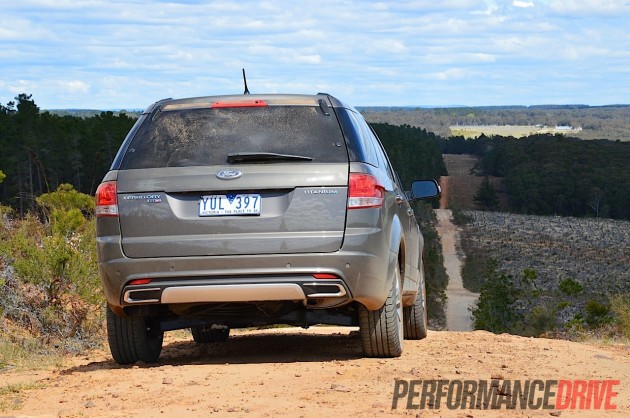
Based on the Ford Falcon, this is the first time a Falcon/Falcon-based vehicle has been offered with a diesel engine. The 2.7-litre V6 engine is derived from a Ford Europe twin-turbo unit which has been used in various Land Rover and Jaguar vehicles over the years. In the Territory it produces 140kW and 440Nm.
If the Falcon is going to live on past 2016, this kind of oil-burning attitude may be the company’s only chance to cling onto sales, and to save one of Australia’s biggest automotive icons. The question has to be asked; why isn’t this engine available in the normal Falcon?
The model tested here is the top-line Territory Titanium TDCi rear-wheel drive (RWD). The only higher spec Territory you can buy is the all-wheel drive version.
Prices start at $58,240 for this rear-drive model, and $62,740 for the all-paw variant. Prices for the TDCi base model TX RWD start at $43,240.

2012 FORD TERRITORY TITANIUM TDCI RWD – START UP AND 0-100KM/H ACCELERATION VIDEO
2012 FORD TERRITORY TITANIUM TDCI RWD – ACCOMMODATION AND EQUIPMENT
The Territory rides on a complete Falcon platform. Apart from the climb up into the cabin, rather than sliding across into it, the Territory interior resembles the Falcon in almost every way. The dash layout is the same, the centre console is also very similar, as are the seats and steering wheel. If you know your Falcons, you’ll know this also means there’s heaps of space inside.
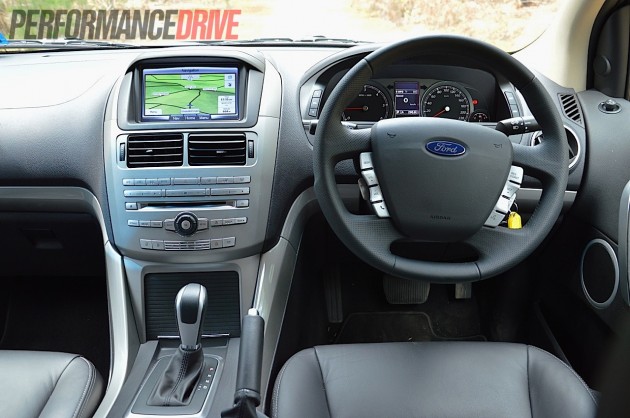
The seats are big and comfortable in true Falcon form. The driver’s position is a little awkward, again, like the Falcon. The steering wheel can be adjusted for rake and reach but even still it can be difficult to find that perfect position.
You won’t be hearing many complaints from rear seat passengers though as there’s heaps of legroom and shoulder space. Even when the front seats are slid all the way back rear passengers are well-accommodated.
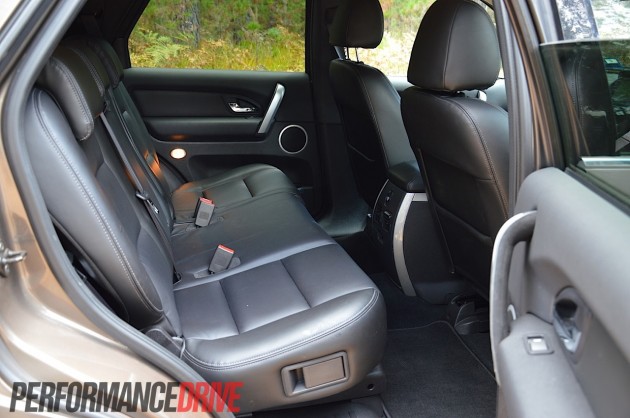
In the Titanium, rear passengers are also treated to an Alpine fold-down DVD player with wireless headphones. This is a great feature for the kids during long journeys.
The only part of the cabin that is a bit disappointing, in terms of accommodation and space, is the third row seats. These are really only suitable for small children. The seat bottom practically rests on the floor leaving little space for legs before the second-row seats.
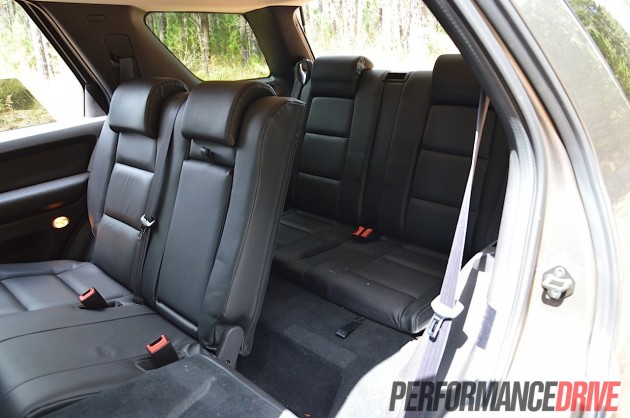
Overall, it’s not the most refined cabin out there, but it all works well and it’s easy to understand; there’s nothing overwhelming about it. The layout and design is consistent too, despite being a bit dated, with textured plastic on the dash, plenty of leather/vinyl trimmings, and smatterings of silver tones and highlights for a bit of contrast. It’s a pleasant and relaxing place to be.
In terms of equipment, the Titanium comes with all the usual creature comforts you’d expect on a $50k vehicle like climate control air-conditioning, electric windows, a power driver’s seat (slide action only), and ample cup holders front and rear.
You won’t find anything really advanced in here, but you do get a useful multimedia ‘Command’ interface with Bluetooth and USB connectivity, and satellite navigation.
The stereo system isn’t quite as good as you would expect on a top-line vehicle. It still cranks alright if you’re playing high-quality CDs, but for the radio and playing songs from a USB, it really could do with a bit more clarity and bass.
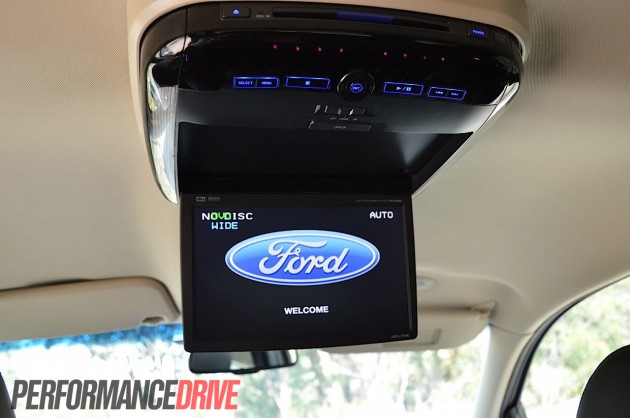
2012 FORD TERRITORY TITANIUM TDCI RWD – DESIGN AND SAFETY
It’s easy to spot the 2011 model update. Ford really stepped up the mark by adding in prestigious chrome accents in the front, a more sophisticated front end with new hexagonal-style grille shapes, and more intricate taillight designs.
It looks quite modern and even a little bit European from some angles, especially with the string of LED park lights in the front bumper bar.
Like the Falcon, ANCAP has awarded the Territory five stars for safety. It comes with five airbags, traction and stability control with rollover mitigation, and a reverse parking camera.
During recent crash tests ANCAP gave it 32.57 out of 37, saying that safety is improved from the first-gen 2006 model.
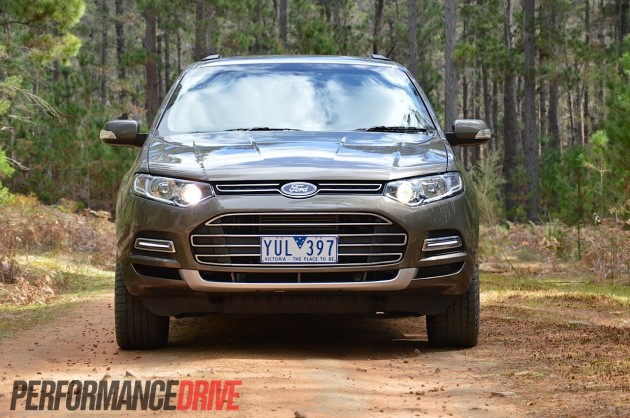
2012 FORD TERRITORY TITANIUM TDCI RWD – ON THE ROAD
Even though this is the rear-wheel drive variant, the Territory has no trouble in light off-road conditions. This is partly thanks to the 175mm of ground clearance. The limited-slip-differential-like traction control at the back also helps out a lot during mild articulations.
It’s an ideal vehicle for those big family/friends weekend getaways. You can pack the rear full of tents and gear, along with the odd Esky or even a small fridge, thanks to the 1153 litres of space (third row seats folded down), and still be left with loads of room for five adults.
The TDCi engine provides plenty of torque to pull it all along too, 440Nm in fact, which is a lot even by turbo-diesel standards. It has no trouble pulling the Territory up hills once it’s up to speed.
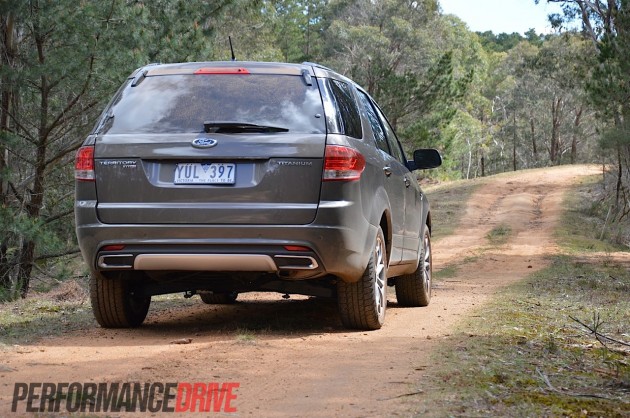
The kerb weight of 2109kg and a power-to-weight ratio of 15kg:1kW means acceleration is not going to be one of the TDCi Territory’s fortes. We timed 0-100km/h in 9.8 seconds. Having it in either normal ‘D’ or ‘S’ transmission mode doesn’t really make any difference to its performance.
The engine doesn’t mind being revved, but like most diesel engines, there’s no real point taking it beyond its peak power point. In this case, 4000rpm. Torque is available from just 1900rpm, so you’ve basically got a usable window of around 2000rpm.
As you can hear in our quick overview video above, the TDCi engine doesn’t sound too bad for a diesel. You could easily mistake it for the humming 4.0-litre petrol six out on the highway. It’s really only when you start it and during take off that the trademark diesel clatter can be heard. But even then, Ford has worked hard to reduce noise intrusion into the cabin through the extensive use of sound-deadening materials. We found the engine refinement and noise levels to be slightly better than what the competition offers.
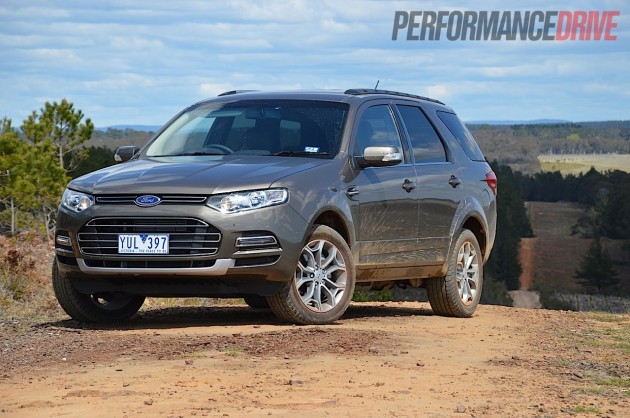
In our opinion, one of the main weaknesses to the Territory when hitting the beaten track, and even on undulated tarmac roads, is the lack of stiffness in the suspension. The Territory, or at least this rear-wheel drive variant, is really set up for comfort. We experienced some bottoming-out during dirt road and light off-road driving, and bouncing during road dips and intersection crossings.
Another drawback we experienced was with the transmission. During kick-down and going from reverse to drive the gearbox delays, and even clunks on some occasions. This may be confined to our test vehicle though which had over 6000km on the clock – a lot for a press demonstrator.
2012 FORD TERRITORY TITANIUM TDCI RWD – VERDICT
The Territory is a friendly giant to live with. It’s very accommodating, warm, and relaxing, while the interior isn’t intimidating in any way. It’s perfect for families in other words. It’s also a great vehicle for those that want a Falcon but love the odd weekend adventure.
With the turbo-diesel engine and its economical benefits, we feel the Territory’s desirability is at least doubled. We averaged just 9.5L/100km during our test, and this included having a bit of fun on the dirt and doing acceleration tests. In the real world, expect that figure to drop by at least one litre.
As for opting for RWD or 4WD, it really depends on how serious you are about off-roading. The RWD version comes with an official economy rating of 8.2L/100km, while the 4WD is rated at 9.0L/100km. The difference is significant enough to consider whether you really need off-road performance. As mentioned above, the RWD variant has no trouble in mild rough road conditions thanks to its high ride height and traction control system.
In the end what you’re getting is a large SUV – usually a costly outlay straight off the bat – with decent luxury and design, fuel-efficient turbo-diesel power, and all for $58k. If you were to turn to almost any other non-Australian manufacturer for a recipe like this, you’re looking at a price tag of $80,000 and beyond. And for that reason, the Territory is a bargain worth punting for.
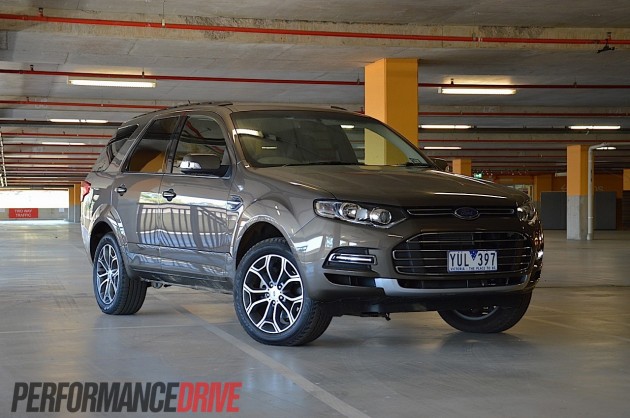
2012 FORD TERRITORY TITANIUM TDCI RWD – THE COMPETITORS
Toyota Prado VX (4WD) – 3.0-litre turbo-diesel four-cylinder, 127kW/410Nm – 2295kg – $76,990
Perhaps the most trustworthy option around. Decent starting price for the base model ($55,990), Toyota reliability, strong turbo-diesel engine also economical.
BMW X5 xDrive30d – 3.0-litre turbo-diesel inline six, 180kW/540Nm – 2013kg – $91,200
If you need a large SUV that can also handle around corners like a sports car, the X5 leads the pack. Very fuel-efficient turbo-diesel engines on offer, as well as the high performance twin-turbo 408kW V8 ‘X5 M’.
Mercedes-Benz ML 250 CDI – 2.1-litre twin-turbo-diesel four-cylinder, 150kW/500Nm – $81,400
Leading edge when it comes to refinement and luxury. Turbo-diesel ‘250 CDI’ engine may be small but it’s still quite potent. Top-spec V8 AMG the go for outright performance.
2012 FORD TERRITORY TITANIUM TDCI RWD – SPECIFICATIONS
MODEL
2012 Ford Territory Titanium TDCi RWD
ENGINE
2.7-litre turbo-diesel V6
ENGINE SIZE / COMPRESSION RATIO
2720cc / 17.3:1
BORE X STROKE
81mm x 88mm
POWER
140kW@4000rpm, 440Nm@1900rpm
POWER TO WEIGHT RATIO
15: 1 (kg:kW)
KERB WEIGHT
2109kg
HEIGHT / WIDTH / LENGTH
1716mm / 1898mm / 4883mm
DRIVETRAIN
Six-speed auto transmission with Sports mode, rear-wheel drive
BRAKES
F: Ventilated discs
R: Ventilated discs
WHEELS / TYRES
F and R: 18 x 7.5-inch alloy, 235/55 R18
FUEL TANK CAPACITY
75 litres
FUEL TYPE
Diesel
FUEL CONSUMPTION
Tested average: 9.5L/100km
Official average: 8.2L/100km
PERFORMANCE
0-100km/h: 9.8 seconds (tested)
PRICED FROM
$58,240
WARRANTY
Three-year/100,000km
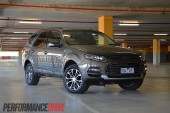
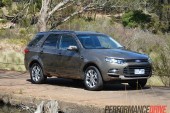
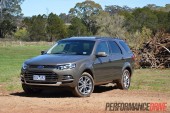
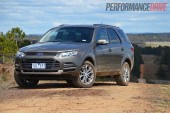

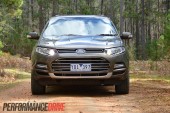

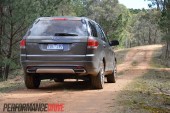
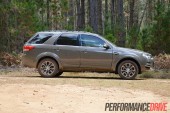
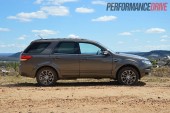
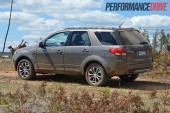
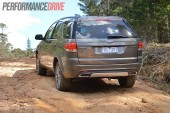

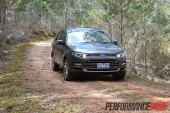
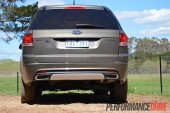
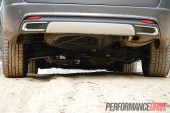
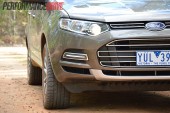
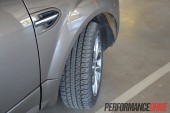
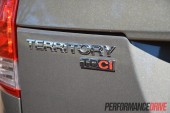
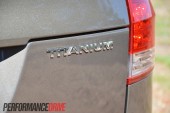
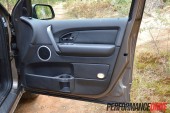
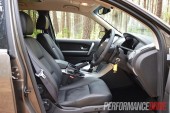


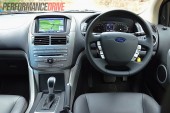
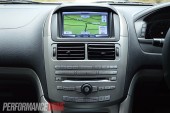
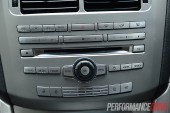
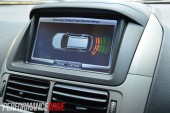

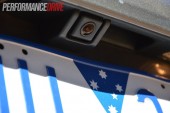
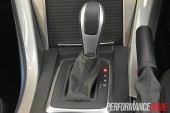
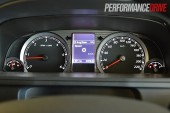
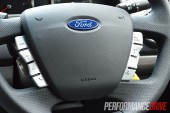
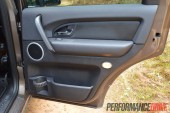
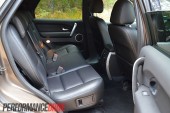
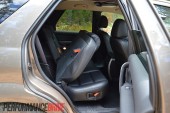
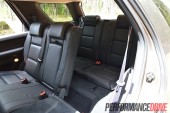
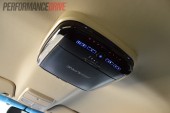
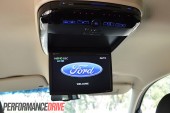
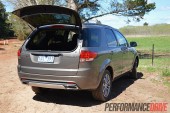

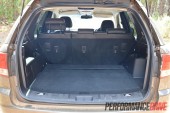
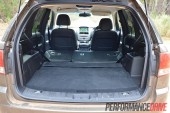

I see how biased you’re in this article,
I thought this was a good car as well until I drove the Falcon XR6 2012 model for a road trip a couple of days ago. (Note that Falcon XR6 is even better than this car)
You mentioned “In the end what you’re getting is a large SUV – usually a costly outlay straight off the bat – with decent luxury and design, fuel-efficient turbo-diesel power, and all for $58k. If you were to turn to almost any other non-Australian manufacturer for a recipe like this, you’re looking at a price tag of $80,000 and beyond. And for that reason, the Territory is a bargain worth punting for”.
Seriously the interior looks super duper cheap, multimedia and stuff response super slow, it was very irritating, the wheel was hard to steer too. Very outdated, the interior can’t even be compared with a Toyota Camry.
Compare to others like BMW X5 and Mer, this car doesn’t mean a thing.
The front grill looks similar to VW Tourage, the headlights looks like a Honda Euro car, I know many people love this car and I don’t have a problem with it but your article is just way too biased.
Hi Nate,
I’m not sure that the article is overly biased. If the review likes the car overall, that’s all there is to it – both good positives and negatives have been stated. I own a 2013 Territory Titanium. I do agree with you about inferior interior compared to more expensive competitors, but on the whole, this car, as a package, meets a lot of needs. From a kid friendly point of view (and enjoying camping as we do), the “plastic” doesn’t bother us – it may of course bother some who prefer more refinement.
I’ve also driven the Falcon XR6, which is a good drive, but again agree with the article that there is significant similarity between drives – in fact remarkable considering weight distribution and proportions.
You make a good point about “stuff response” and it’s true to some extent – but I’d check that in the 2013, it’s been improved from my limited knowledge with software updates, because ours isn’t too bad. I’ll add to this by saying that it could do with a more “constant clock”, which could disappear on the ICC from time to time.
Anyway, it’s great we’ve all had input because it can only serve to improve what I think is a truly great Australian manufactured vehicle.